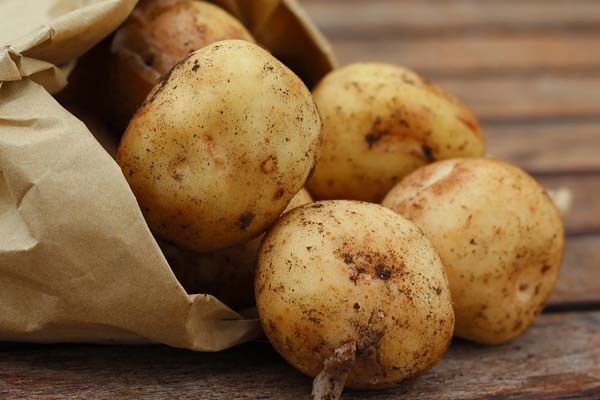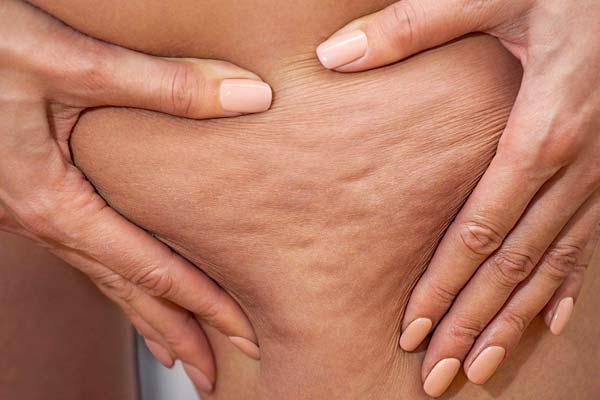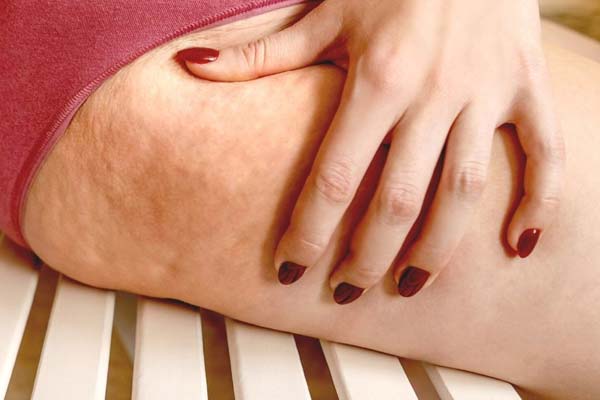هل البطاطس تكبر المؤخرة؟ الحقيقة المثبتة علمياً
تعتبر البطاطس من الأطعمة الشائعة والمحببة لدى الكثيرين، وتستخدم في العديد من الوصفات الشهية. ولكن، هل هناك علاقة بين تناول البطاطس وزيادة حجم المؤخرة؟ تعد هذه المسألة من المزاعم الشائعة التي يتم تداولها بشكل كبير، ولكنها لا تستند إلى أي دليل علمي يثبت صحتها.
سيتم في هذا المقال تحليل المزاعم والاعتقادات حول تأثير تناول البطاطس على حجم المؤخرة وتقديم الواقع العلمي حول هذه المسألة. كما سيتم توضيح الأسئلة التي سيتم استكشافها في البحث، مثل هل هناك أدلة علمية تدعم فكرة زيادة حجم المؤخرة بواسطة البطاطس؟ وما هي العوامل الأخرى التي قد تؤثر على حجم المؤخرة؟
يهدف هذا المقال إلى توضيح الحقائق العلمية حول هذا الموضوع، وتفنيد المعلومات الخاطئة والمغلوطة التي يتم تداولها بشكل كبير. سيتم استخدام مصادر علمية موثوقة ودراسات سابقة لتوضيح هذه القضية بشكل واضح وشامل.
نظرية زيادة حجم المؤخرة بواسطة البطاطس
تناول البطاطس لا يؤدي إلى زيادة حجم المؤخرة بشكل مباشر. ومع ذلك، فإن البعض يعتقد بعض المزاعم والاعتقادات المنتشرة في بعض المجتمعات حول تأثير تناول البطاطس على حجم المؤخرة. ويعتقد البعض أن تناول البطاطس يمكن أن يزيد حجم الأرداف ويكبر المؤخرة.
تحتوي البطاطس على النشويات والسعرات الحرارية، وهي مواد غذائية يعتقد البعض أنها يمكن أن تزيد من الوزن وبالتالي تكبير المؤخرة. ومع ذلك، فإن النظرية التي تزعم أن تناول البطاطس يمكن أن يكبر المؤخرة لا تستند إلى أي دليل علمي.
بالإضافة إلى ذلك، فإن البطاطس ليست الطريقة الوحيدة لزيادة حجم المؤخرة. هناك العديد من الأطعمة الأخرى التي يمكن أن تساعد في زيادة حجم المؤخرة مثل السمسم، زيت الحلبة، والتمر، والتي تحتوي على مواد غذائية مفيدة للجسم.
بشكل عام، فإن زيادة حجم المؤخرة يتطلب ممارسة التمارين الرياضية المناسبة واتباع نظام غذائي صحي ومتوازن يحتوي على العديد من العناصر الغذائية المفيدة للجسم. لذلك، لا ينبغي الاعتماد على تناول البطاطس فقط لزيادة حجم المؤخرة، ويجب النظر إلى النظام الغذائي العام وممارسة التمارين الرياضية بشكل منتظم.
الحقائق العلمية حول البطاطس وحجم المؤخرة
تم استعراض الدراسات العلمية الحديثة التي أجريت لتحليل تأثير البطاطس على الجسم وتحديدًا المؤخرة. وتبين أنه لا يوجد أدلة قوية تدعم فكرة زيادة حجم المؤخرة بواسطة البطاطس. قد تشير بعض الدراسات إلى أن زيادة الوزن العام قد يؤثر على شكل المؤخرة، ولكنها لا ترتبط بشكل مباشر بتناول البطاطس فقط.
في الواقع، تحتوي البطاطس على نسبة عالية من الكربوهيدرات، وقد يؤدي تناول كميات كبيرة من البطاطس المقلية في الزيت إلى زيادة الوزن. ومن المهم أن يتم تناول البطاطس بشكل معتدل ومتوازن ضمن نظام غذائي صحي.
تتضمن البطاطس العديد من العناصر الغذائية المهمة، مثل البوتاسيوم والفيتامينات، وهي مفيدة لصحة الجسم بشكل عام. ومن الممكن تناول البطاطس بطرق مختلفة، بما في ذلك الخبز والمشوي والمسلوق، وليس فقط المقلي.
يجب أن يتم النظر إلى تناول البطاطس كجزء من نظام غذائي متوازن ومعتدل، وليس كوسيلة لزيادة حجم المؤخرة. ويجب الانتباه لكمية الدهون والزيوت المستخدمة في تحضير البطاطس، والتي يمكن أن تؤثر على الصحة بشكل عام.
بالإضافة إلى ذلك، يمكن ممارسة التمارين الرياضية لتحسين شكل الجسم وتنسيقه، بما في ذلك منطقة المؤخرة. ومن المهم أن يتم تناول البطاطس كجزء من نظام غذائي صحي ومتوازن، وليس كوسيلة لزيادة حجم المؤخرة.
عوامل أخرى تؤثر على حجم المؤخرة
تؤثر العديد من العوامل على حجم المؤخرة، وليست البطاطس وحدها المسؤولة عن ذلك. ومن بين هذه العوامل:
الوراثة
تلعب الوراثة دورًا كبيرًا في تحديد حجم وشكل المؤخرة. فقد يحصل شخص على مؤخرة كبيرة بسهولة بسبب الوراثة، بينما يحتاج آخر إلى العمل بجد لتحقيق نفس النتيجة.
التركيب الجسماني
يؤثر تركيب الجسماني على حجم المؤخرة، حيث يتم تخزين الدهون في مناطق معينة في الجسم. وعادةً ما يكون لدى النساء تركيب جسمي يتسم بتخزين الدهون في منطقة الأرداف والفخذين.
العادات الغذائية العامة
تلعب العادات الغذائية العامة دورًا كبيرًا في حجم المؤخرة، حيث يؤثر النظام الغذائي على وزن الجسم بشكل عام. ويمكن تكبير المؤخرة عن طريق زيادة الوزن بشكل صحي، وذلك عن طريق تناول الأطعمة الصحية الغنية بالسعرات الحرارية مثل الأرز البني والبطاطس والبيض والخميرة والعسل واللوز والصويا والكينوا والتمر.
التمارين
تلعب التمارين دورًا كبيرًا في تكبير المؤخرة، حيث يمكن تنفيذ تمارين مثل القرفصاء والسكوات وغيرها لتقوية عضلات الأرداف وتكبيرها.
يجب على الأشخاص الذين يرغبون في تكبير مؤخرتهم الحصول على استشارة من الأطباء وطرح الأسئلة المتعلقة بالموضوع، والبحث عن المحتوى الطبي ذو الصلة لتحقيق النتائج المرجوة.
الاستنتاج
تم استكشاف فكرة زيادة حجم المؤخرة بواسطة تناول البطاطس في الزيت في البحث المذكور، وتم الوصول إلى عدة نتائج. ومن أهم هذه النتائج أنه لا يوجد دليل قوي يدعم فكرة زيادة حجم المؤخرة بواسطة تناول البطاطس بشكل خاص. بالإضافة إلى ذلك، يختلف توزيع الدهون في الجسم من شخص لآخر، ويتحدد بالوراثة.
ومن الأفضل أن يتبع المتلقي نمط حياة صحي ومتوازن بشكل عام لتحقيق الشكل المطلوب للجسم، بما في ذلك توازن التغذية وممارسة النشاط البدني. ويمكن أن يساعد تناول بعض الأطعمة الصحية في تكبير المؤخرة، مثل المكسرات والأطعمة الغنية بالبروتين والفيتامينات.
يجب على المتلقي أن يتذكر أنه لا يوجد طريقة سحرية لزيادة حجم المؤخرة بشكل مفرط، وأن الأسلوب الأكثر صحة وفعالية هو اتباع نمط حياة صحي ومتوازن بشكل عام. ويجب أن يتم التركيز على الصحة والعافية بدلاً من الشكل الخارجي فقط.
وبهذا يتم إعادة تلخيص النقاط الرئيسية التي تم استكشافها في البحث، والتأكيد على أهمية الاهتمام بالصحة والعافية بشكل عام.






